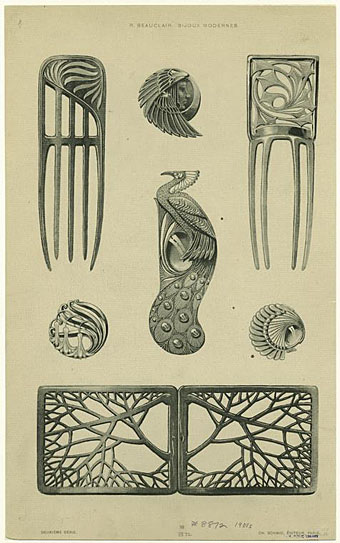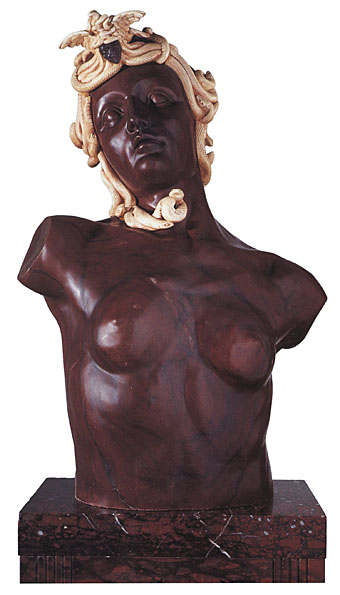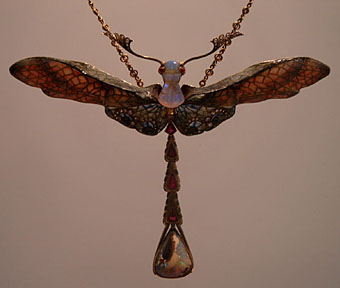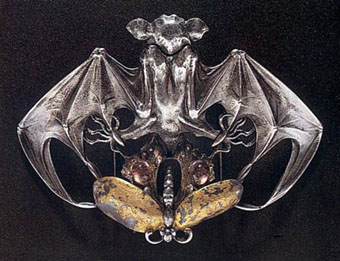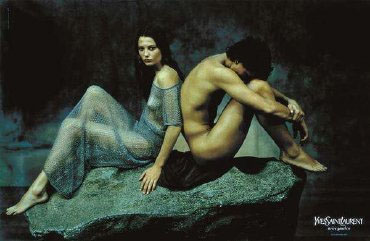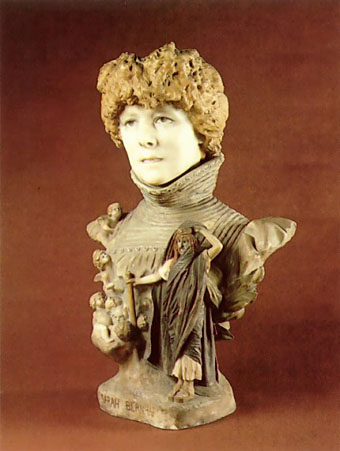
Sarah Bernhardt by Jean-Léon Gérôme (1895).
You can’t be a fin de siècle fetishist and not develop a fascination with actress Sarah Bernhardt, a woman who was muse to many of the era’s finest artists, most notably Alphonse Mucha, who she employed as her official designer. Mucha’s marvellous posters are endlessly popular, of course; less well-known is the sculpture by academic painter and Orientalist Jean-Léon Gérôme, a rare three-dimensional work inspired by the actress.
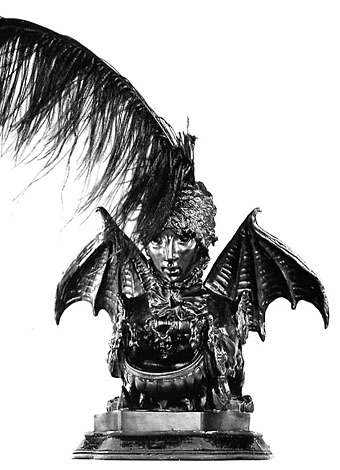
Inkwell by Sarah Bernhardt (1880).
Even less well-known is Ms Bernhardt’s own design for a curious bat-winged inkwell. I’ve read of her having created other sculptural works but so far this is the only one I’ve seen a picture of. With something as decadent as this you’d really have to use peacock quills for pens, wouldn’t you?
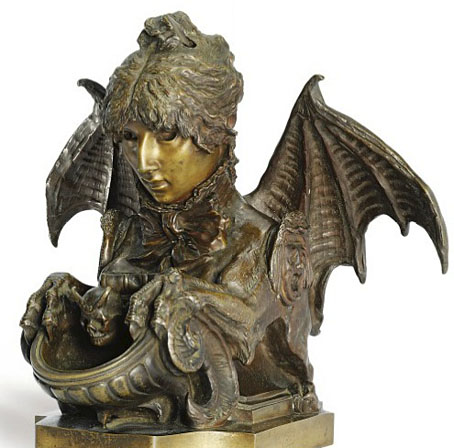
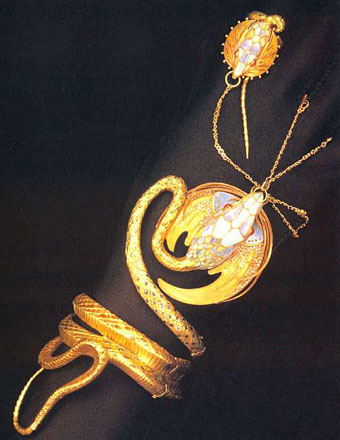
Bracelet by Alphonse Mucha & Georges Fouquet (1899).
And in a similar sinister vein to the inkwell there’s this serpentine bracelet and ring, a superb one-off, designed by Mucha and crafted by the jeweller Fouquet. After seeing works such as this and the Lalique dragonfly (which Ms Bernhardt once wore), most other jewellery seems timid and unadventurous in comparison.
Update: Added another photo of the inkwell.
Previously on { feuilleton }
• The art of Philippe Wolfers, 1858–1929
• Lalique’s dragonflies
• Lucien Gaillard
• Smoke
• The Masks of Medusa

